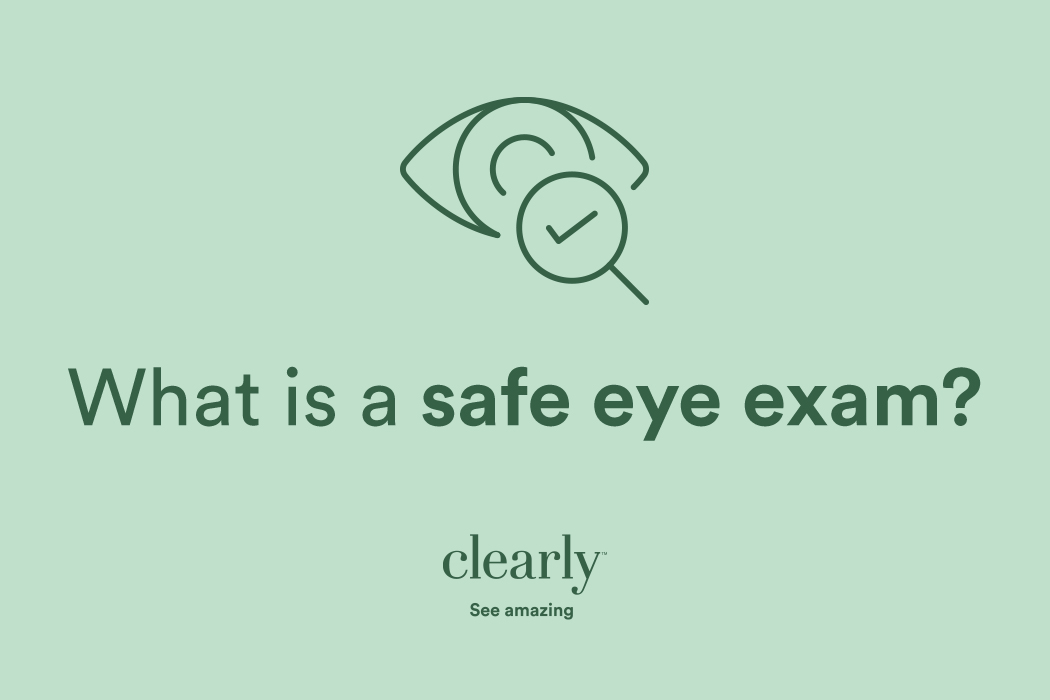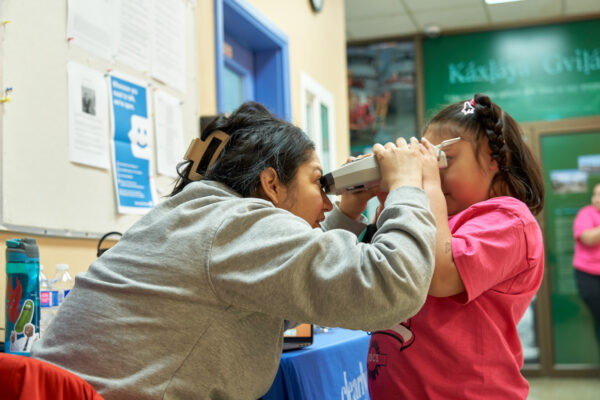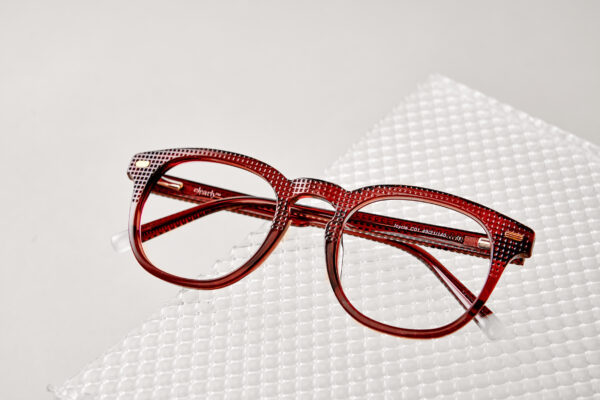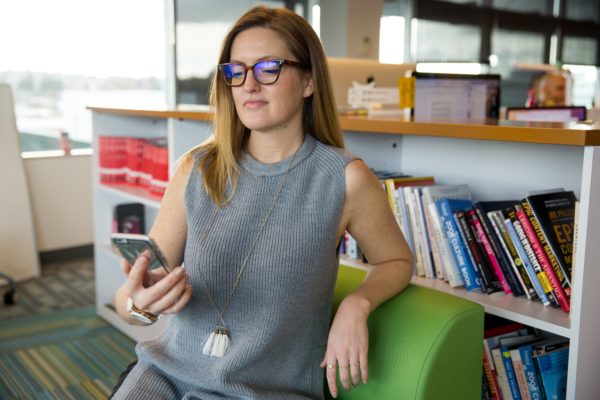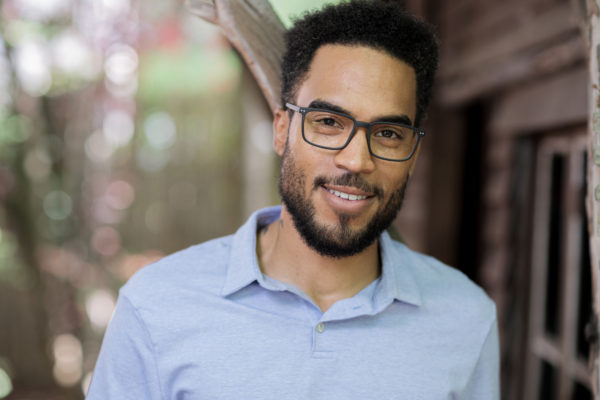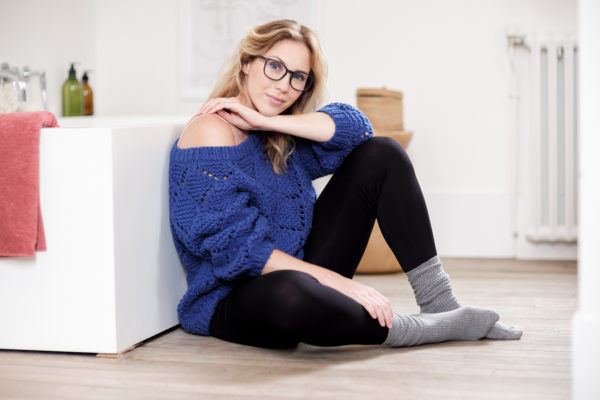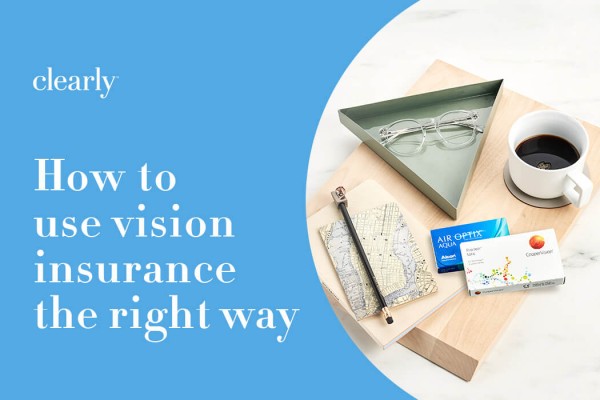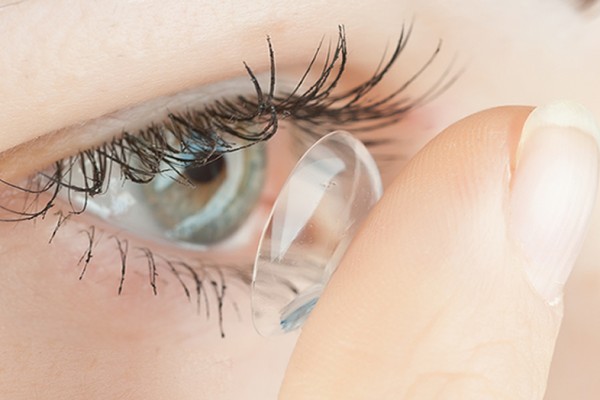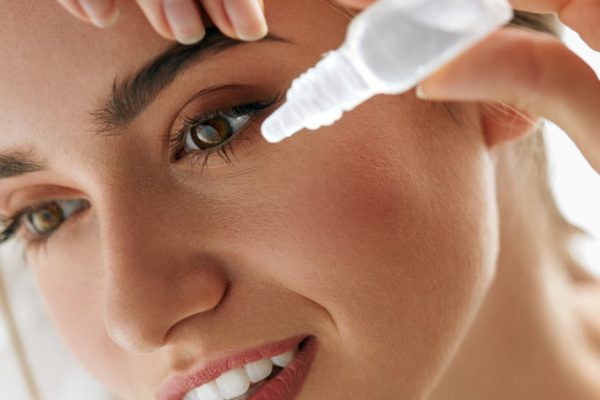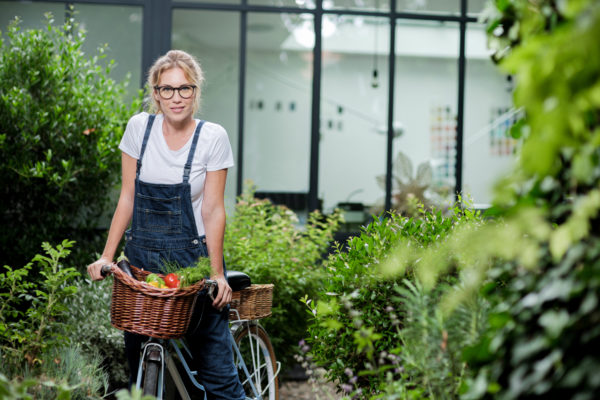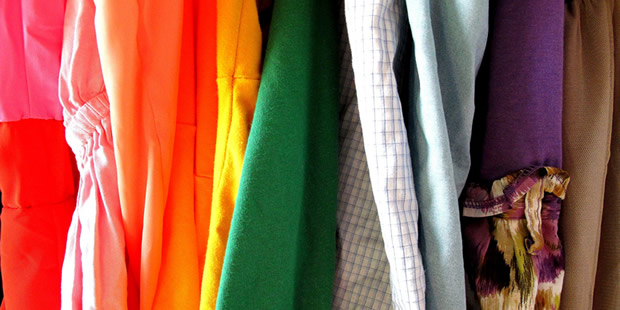This post is also available in:
![]() Français (French)
Français (French)
As the COVID-19 pandemic slows and government restrictions are eased, vision stores and offices across Canada are once again opening their doors.
They’re not so much heaving their doors wide open, but instead slowly reopening their doors with careful safety measures in place.
It’s only normal for patients and customers to have reservations about brick-and-mortar outings during a time like this, and Clearly team members are rolling out a checklist of health practices to make visitors feel more at ease.
“Anxiety and uncertainty during a pandemic come naturally,” says Dr. Melissa Yuen, lead optometrist at Toronto’s Queen Street Clearly location. “By taking the necessary precautions […] and thinking about all challenges we may potentially face beforehand, we can safely conduct an eye exam and ensure all patients’ eye health and vision are taken care of.”
Here are a few of the ways Clearly stores and exam offices are maximizing safety as they reopen:
Face masks, goggles and gloves: All employees are required to wear personal protective equipment (PPE). Face masks and eye protection are worn at all times, and single-use gloves are used then thrown away whenever customer contact is needed.
End-to-end sanitization: Frequently touched “hot spots” such as counters, pens, door handles and bathrooms will be disinfected on a regular basis. Every pair of sample frames, along with any nearby surfaces touched, will be sanitized after each customer interaction. Customer frames being repaired or adjusted will also be disinfected before and after handling.
Screening and sanitizing prior to entry: Patients, customers, doctors and staff will be screened before entering any Clearly exam office or store. This includes a contactless temperature check, an assessment of any symptoms, and questions about any possible coronavirus contact or recent travel outside the province. Hand sanitizer will be available before entry and at multiple points throughout each location.
Social distancing encouragement: Educational signage will be posted along with distance markings on the ground, indicating where customers should stand to ensure the recommended 2-metre (6-foot) social spacing. Dr. Yuen notes that waiting room chairs will be rearranged for proper distancing and all magazines and pamphlets will be removed.
Fewer eye appointments: Reducing the number of exams per hour allows for more time between each appointment to disinfect exam rooms, seating areas and high-touch surfaces.
Plexiglass barriers: Sneeze guards and other barriers have been installed to stop airborne particles where social distancing can’t be observed. This includes the use of plastic shields with pupilometers during eye exams.
Tech support: Eye doctors are “leveraging technology to assist with physical distancing,” says Dr. Justin Asgarpour, optometrist at Vancouver’s Robson st Clearly location. He specifically notes the use of automated phoropters, retinal optical coherence tomography (OCT) scans, fundus photography and virtual glasses try-on.
Remote communication: Dr. Asgarpour also mentions practicing remote communication with patients when possible. Appointments for eye exams and entry time slots can be booked online to avoid lines at the store.
These practices follow the recommended government guidelines, and like the health practices of so many Canadian businesses, they’ll be updated accordingly as soon as local, provincial and/or national guidance changes.
In the meantime, Dr. Asgarpour’s top priority is to “facilitate the safety of our patients, staff and community as a whole.”
The big blue decals on the front door of every Clearly store read, “It’s wonderful to see you again.” For many, something as routine as getting an eye exam or shopping for new glasses can be a welcome reminder that life is slowly returning to normal.

